
Walrus
Walrus
Walrus
Have you ever heard of a walrus, a sea-dwelling mammal with a very large body and fangs? They sometimes hold shows at aquariums, so some of you may have actually seen them in front of you. Walruses are often thought of as scary animals because of their appearance and size, but they are actually wonderful animals that are very kind and smart. In this article, we'll take a sneak peek at what characteristics and secrets walruses have!
Walrus Basic Infomation
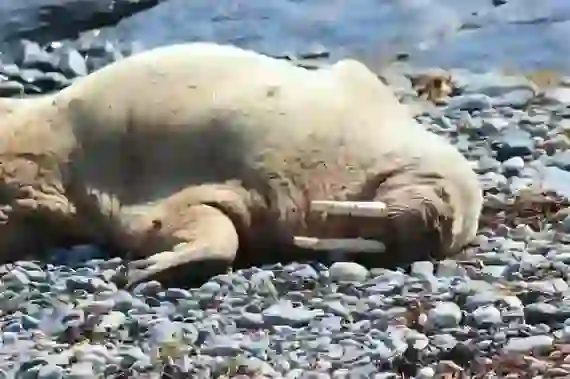
Mammalia-Carnivora-Odobenidae-Walrus genus.
Length:2.3~3.6m. Weight:1.2~2t.
The walrus is a species of marine mammal that inhabits the Arctic Ocean and its coastal areas, characterized by a very large body and tusks.They have a strong tendency to live in packs, sometimes forming large packs of hundreds of animals.
The breeding season of the walrus is from January to March, and after a gestation period of 14 to 15 months, it gives birth to one child.
Walrus males and females usually live in completely different places.
※Males are in the Arctic all year round, while females follow the ice floes moving south in the fall and north in the spring.
However, during the breeding season, females form flocks of 10 to 15 animals and meet and mate with males.Walrus children are large from birth, already about 1m long and weighing about 60kg. Walrus children receive breasts from their mothers for two to three years and are raised with a lot of love.
Walruses are carnivorous animals that feed on bivalves in the wild. They also eat squid, octopus, gokai, sea cucumber, snails, and slow-moving fish.When they have nothing to eat, they may eat the carcasses of the same marine mammals (seals, etc.).
Walrus Q&A

The origin of the walrus's name?
The name "walrus" is said to have originated from the Russian word "sivuch," which means "steller sea lion".Apparently, people in the past mistook a walrus for a steller sea lion, and that's where the name came from.
Incidentally, the scientific name of the walrus is written as "odobenus rosmarus", which means "horse of the sea walking with teeth".
In Japanese, it is sometimes referred to as a "sea elephant" because of its body size.
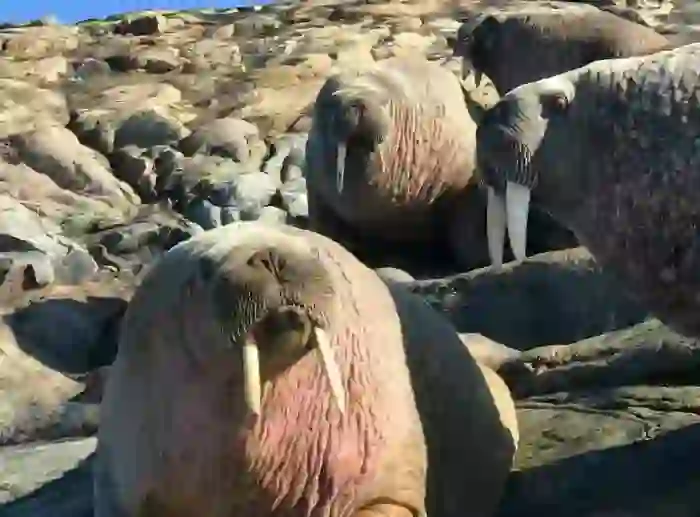
Why are walrus tusks so big?
The most distinctive feature of the walrus is its large fangs that protrude from the corners of its mouth like those of a saber tiger.
The fangs of a walrus continue to grow for the rest of their lives, about 1cm each year. And the male's fangs can be up to 1m long, and the female's can be up to 60cm long.
Walrus tusks become visible from the outside after about a year and a half of age, but female tusks are thinner than males. It can also have a large bend.
Therefore, walrus researchers can guess the sex and approximate age of walruses by looking at their fangs.
Walrus tusks are very hard, and I use them like a pickel when going from the ocean to land, to make holes in the ice on the surface of the ocean for breathing, or in battles between males, and many other things.
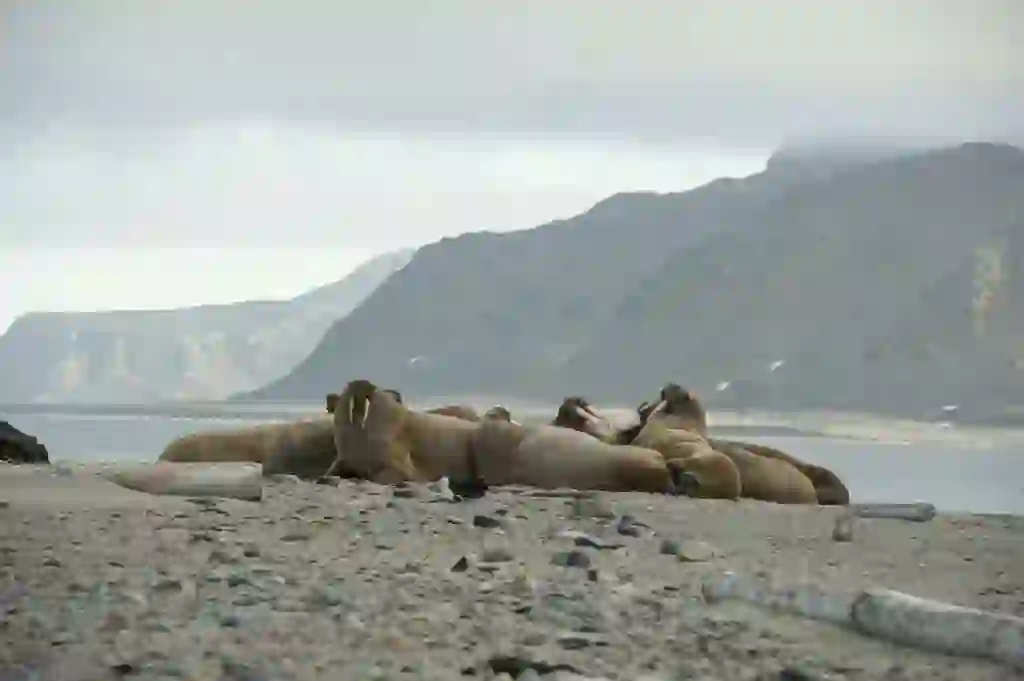
Why do walruses have so many beards?
There are about 500 pasta-like beards around the nose of a walrus, but let's take a look at what the role of a walrus beard is.
Wild walruses feed on bivalves that burrow into the sand on the ocean floor.However, the sun does not reach the bottom of the deep sea very well, so walruses have to search for food in the pitch black sea. A lot of beards can be useful in such cases.
The beard of a walrus is very sensitive, and when you touch an object like a human finger, you can tell where it is and what it is. Walruses use their whiskers to search for bivalves even in the pitch-black sea, and suck out and eat only the contents.
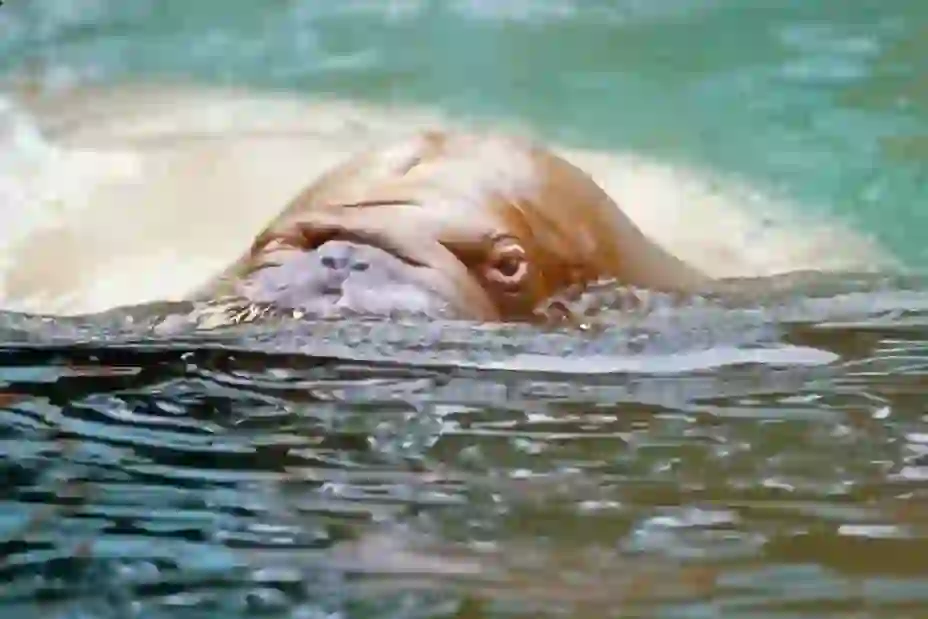
What kind of personality is a walrus?
Some people may think that walruses look kind of scary because their bodies are so big and their eyes are so gloomy.
However, contrary to their appearance, walruses are curious, playful, and kind.
Wild walruses are said to be kind to children, have good communication with their friends, and have a somewhat human-like personality, going to help their friends when they are attacked.
For this reason, trainers who are in charge of walruses at aquariums often feel human-like when they see walruses.
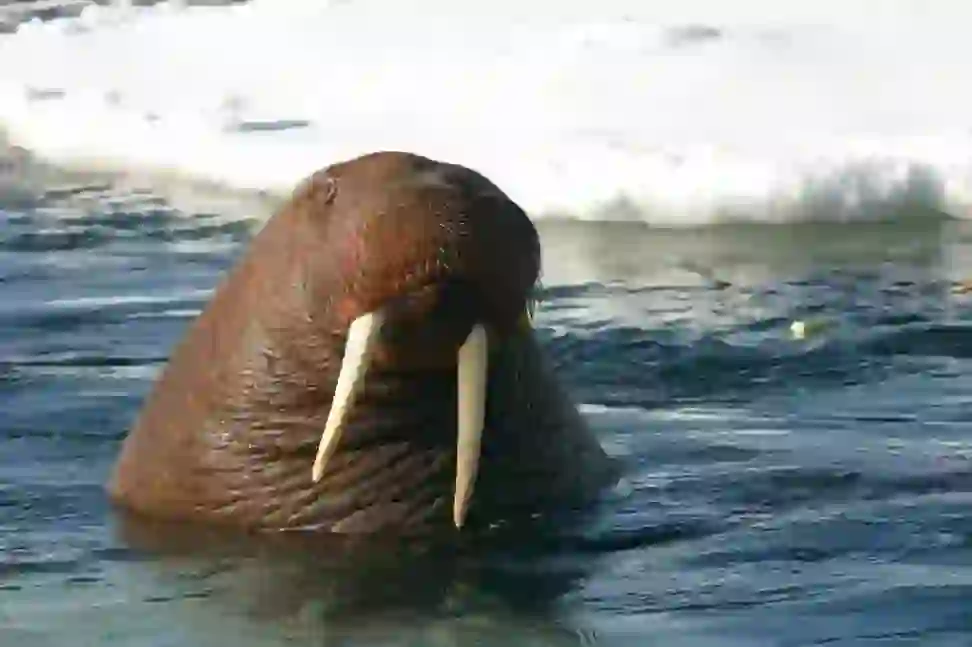
Is it true that walruses are very smart?
It's true.
In fact, walruses kept in aquariums listen to the trainer's instructions, understand them well, and give a show performance.
Incidentally, Pou-kun, a walrus bred at the Toba Aquarium in Mie Prefecture, Japan, has learned more than 30 different techniques.
It is also known that wild walruses play with each other, similar to fighting, or play with seabirds.
Unlike behaviors such as eating and sleeping, the act of playing is not absolutely necessary for survival. For this reason, animals that play (humans, dogs, cats, dolphins, etc.) Are said to be smart and intelligent.
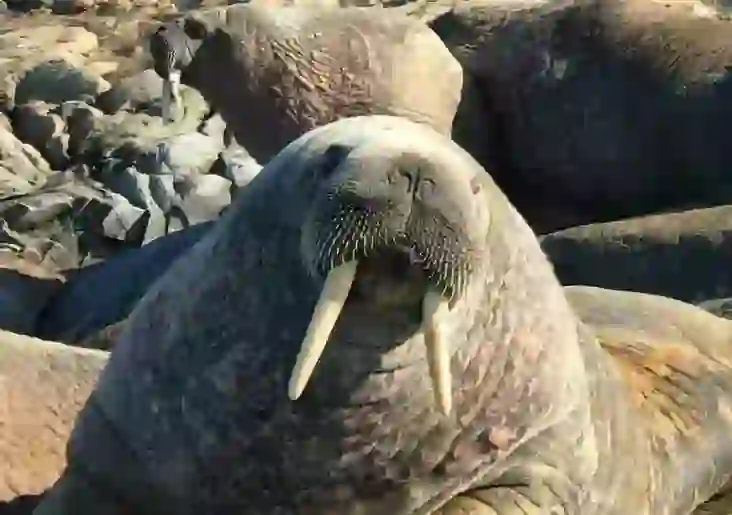
What is the difference between a walrus and a seal?
What are the differences between seals and walruses, mammals that live in the same ocean?
The first and biggest difference is that walruses have large fangs. Seals also have sharp canine teeth, but they do not have tusks as large as those that protrude from the corners of the mouth as walruses do.
Also, walruses and seals have different postures when they are on land.
Seals cannot support and lift themselves with their front legs, so they are always attached to the ground. It also crawls when it moves.
The walrus, on the other hand, can lift itself with its front legs and raise its upper body. When moving, they use their front legs with dexterity, so they can move much faster than seals.
If the animal has large fangs and raises its upper body on land, you can assume that the animal is a walrus.
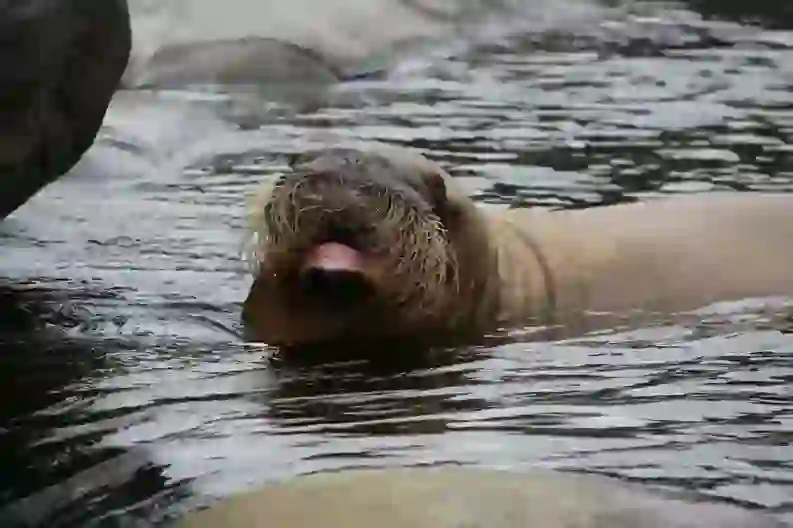
What is the difference between a walrus and a fur seal?
So what are the differences between fur seals and walruses, which are mammals that live in the sea, just like seals?
The first and biggest difference is that walruses have large fangs. Fur seals also have sharp canine teeth, but they do not have tusks as large as those that protrude from the corners of the mouth as walruses do.
Fur seals may be a little more difficult to distinguish than seals because they can support and lift themselves with their front legs, just like walruses. When distinguishing between walruses and fur seals other than the size of their fangs, pay attention to their earlobes, not their posture.
Fur seals are known to have particularly long earlobes among the otariidae. Of course, walruses also have ears, but they don't have earlobes, just holes, so if you pay attention to the fangs and ears, you can easily distinguish walruses from fur seals.
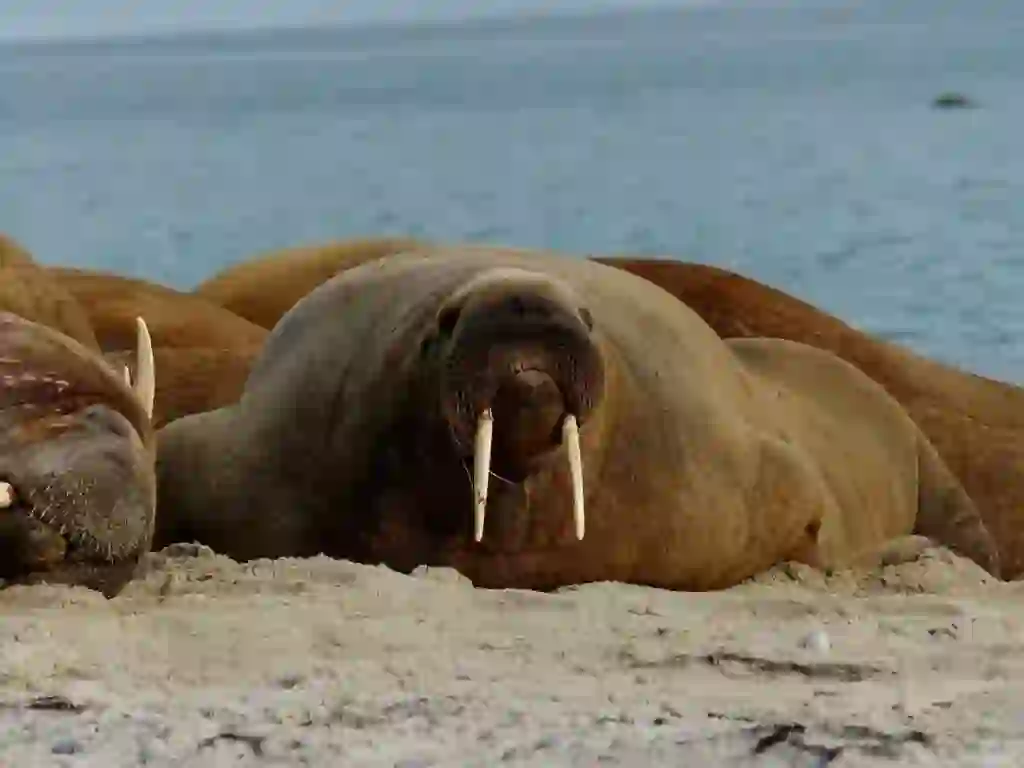
Why are walruses so resistant to the cold?
Wild walruses live in very cold Arctic waters with lots of large floating ice. So why can walruses live in such cold places?
In fact, the body of a walrus hides many secrets that make it more resistant to the cold.
The first secret lies in the thick subcutaneous fat. It is said that the subcutaneous fat of an adult walrus is more than 10 cm.
Fat has the property of not transmitting heat easily, so having thick subcutaneous fat allows the body to keep the heat from escaping.As a result, walruses can maintain a body temperature of about 36.7°C even when diving in freezing temperatures.
The second secret is in the big body. In biology, there is a "Bergmann's Law" that states that the larger an animal's body is, the more resistant it is to cold.
When you fill a large cup and a small cup with hot water, it is the large cup that is harder to cool down, and it may be easier to understand if you think that the same thing happens to animal bodies.
The third secret lies in how the body works. The body of a walrus has an interesting mechanism: while it is in the cold water, it lowers the heart rate and constricts the blood vessels to regulate the body temperature so that it is not taken away.
As a result, the skin of a walrus may temporarily appear pale when the blood vessels constrict as it continues to dive into the cold sea.
Walruses also have a mechanism to send blood to the heart, brain, muscles, and other necessary parts of the body while diving in the ocean. This allows you to dive for a long time, even if you don't take many breaths.
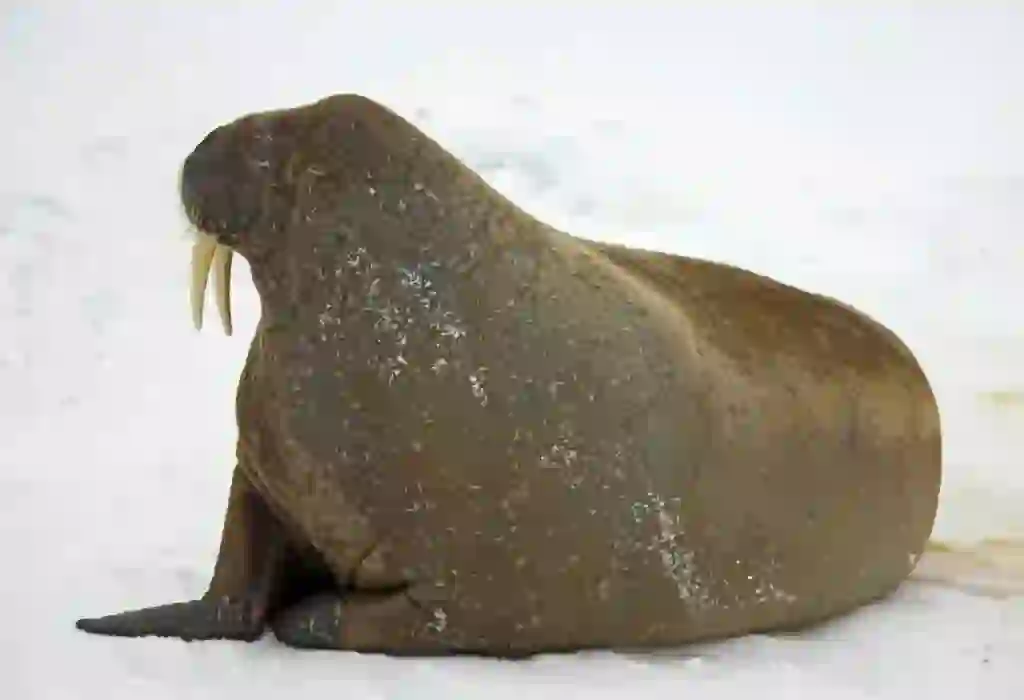
How much food do walruses eat a day?
Walruses kept in aquariums eat as much as 25-30 kg of food a day.
Since it is difficult to prepare large quantities of bivalves that wild walruses eat, aquariums often feed them saury, okhotsk atka mackerel, squid, clams, and shrimp.
The food is given in two or three divided doses, but it is also used as a reward when practicing show acting.
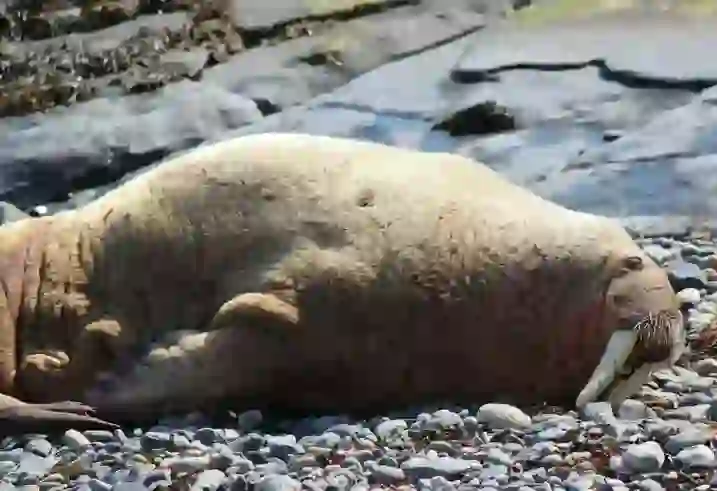
How long do walruses live?
The lifespan of a walrus is thought to be 30 to 40 years.
The longer the lifespan, the slower the growth, so it is said that females start breeding in earnest after about 4 years of age (10 years for slow individuals), and males after about 15 years of age.
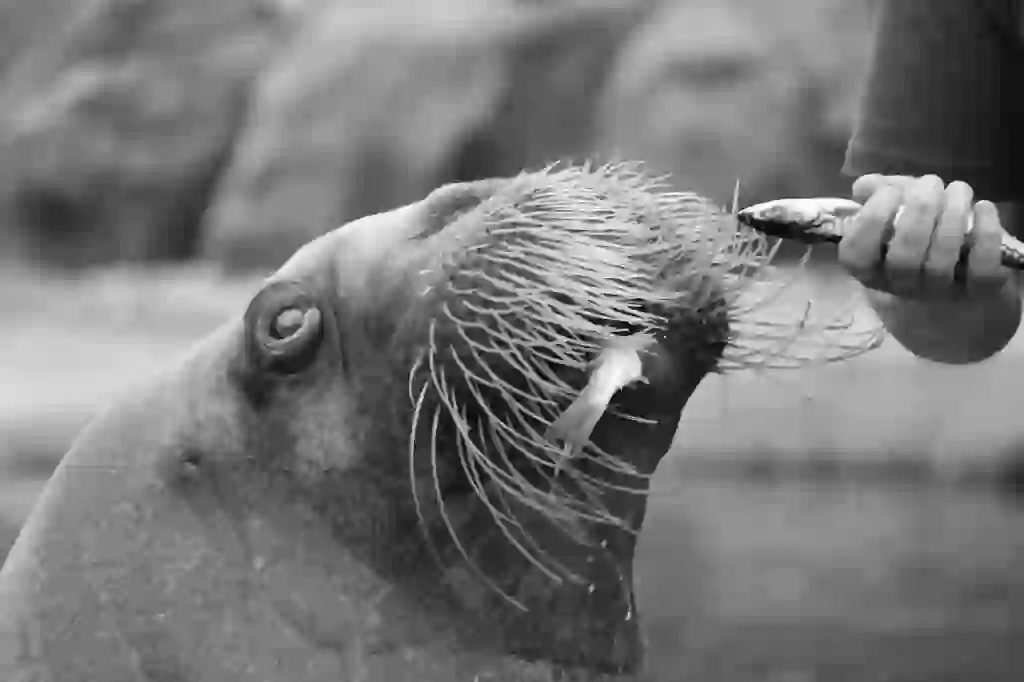
Do walruses ever attack people?
It is said that walruses do not usually attack people.
However, walruses are very curious and large animals.
They have very large fangs and strong power, so even if a person has no intention of harming a walrus, a small thing can cause a person to be seriously injured.
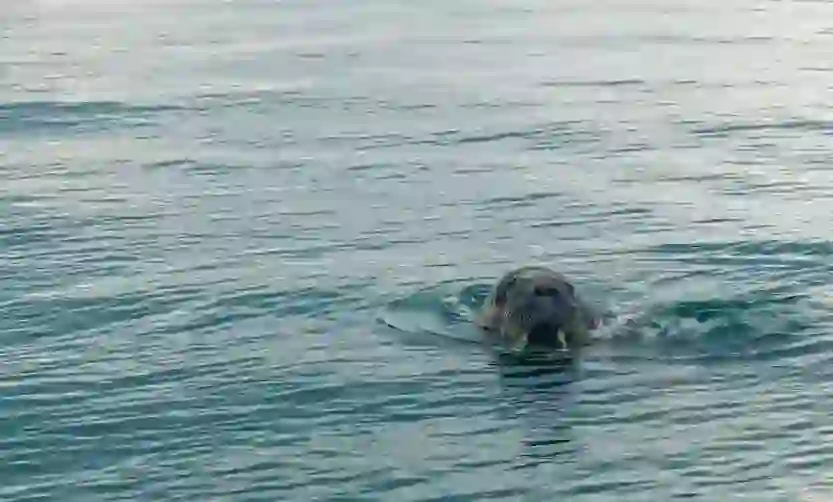
What enemies do walruses have?
It is said that polar bears and killer whales are the natural enemies of walruses in the wild. However, polar bears can be counterattacked by walruses, so they usually only target weakened walruses or children's walruses.
In fact, for the walrus, our number one enemy is us humans.
The Inuit, an indigenous people, have long caught walruses as much as they needed, eating meat and using their skin and fangs.
However, in the 18th century, hunters from Europe and the U.S. Arrived and caught many walruses at once to take advantage of their fur, fangs, and oil. As a result, walruses have rapidly decreased in population and have become extinct in some areas.
Also, due to global warming, the amount of drift ice that walruses use to raise their children and take a break is decreasing, and the number of places where walruses can live is decreasing rapidly.
We should not forget that our lives also affect the lives of walruses, and we should think about what we can do for the environment.

Would you like to become a part of the 'Animalbook.jp'?
Turn your knowledge into Q&A and share it with the world. ※Publication will be activated after purchase. Let's share information together!
Walrus Type of List
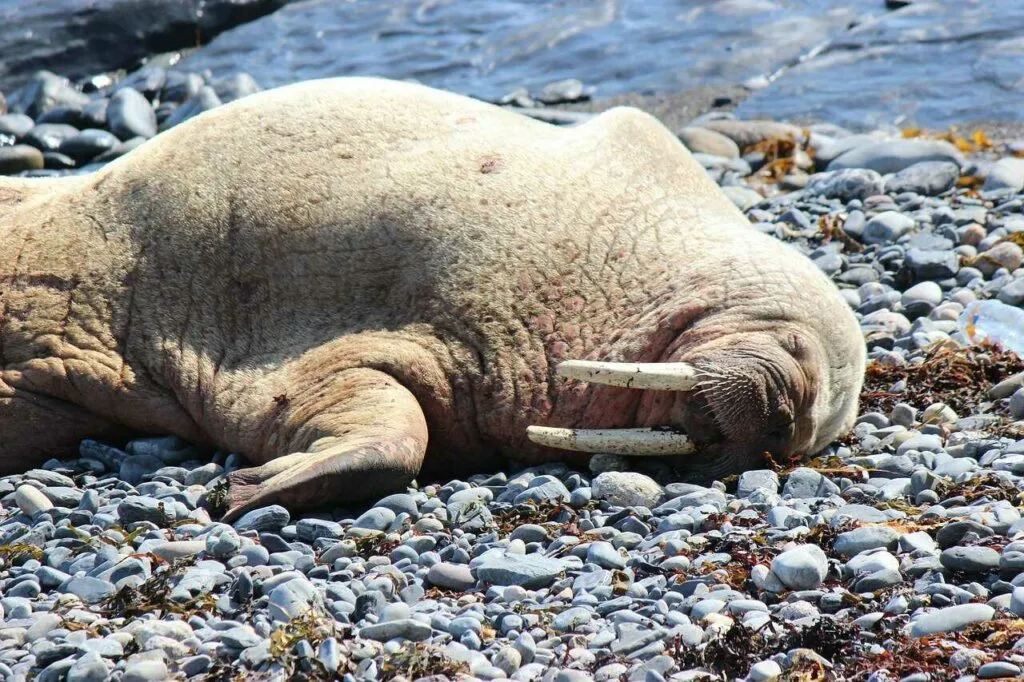
・Pacific Walrus ・Atlantic Walrus
Information
Congratulations! You are the first commenter!

Create Your Favorite List!
Walrus
Save the animals you love! Build your own list to quickly revisit your favorites later.

Would you like to leave a comment?
※Please note: This is for the purchase of rights to post comments within the article.
Find Your Favorites!
Our shop offers a unique and attractive selection of goods themed around various animals.
Walrus References

- D.W. マクドナルド(1986年)『動物大百科2 海生哺乳類』平凡社
- スミソニアン協会(2017年)『驚くべき世界の野生動物生態図鑑』日東書院本社
- 伊豆・三津シーパラダイス「みとしーの動物たち」 http://www.izuhakone.co.jp/seapara/creatures/index.html/
- 伊勢シーパラダイス「動物のご紹介」 https://ise-seaparadise.com/information/
- ナショナルジオグラフィック「動物大図鑑 セイウチ」 https://natgeo.nikkeibp.co.jp/nng/article/20141218/428855/
- ナショナルジオグラフィック「ちょっと意外な、セイウチ」 https://natgeo.nikkeibp.co.jp/nng/article/20131122/374590/
- ナショナルジオグラフィック「ナショジオクイズ 潜水中のセイウチにあらわれる、ある特徴とは?」 https://natgeo.nikkeibp.co.jp/nng/article/20131218/377465/
- 鳥羽水族館「飼育日記 いっぱい食べる君が好き」 https://diary.aquarium.co.jp/archives/41042
- 鳥羽水族館「TSA No.69 2016」 https://www.aquarium.co.jp/more/pdf/69.pdf
- どうぶつのくに.net「vol2.セイウチの子育て」 http://doubutsu-no-kuni.net/special/episode12/p2.html
- コトバンク「セイウチ(海象)」 https://kotobank.jp/word/セイウチ(海象)-1178591
- ちびむすドリル「すいぞくかんクイズ セイウチ」 https://happylilac.net/quiz_aquarium30-ans.pdf
- じゃらんニュース「<水族館クイズ>アシカ、アザラシ、トド、オットセイ…海獣の見分け方知ってる?」 https://www.jalan.net/news/article/458195/
Walrus Introduction of media used
出典:https://pixabay.com/videos/id-6640/

出典:https://pixabay.com/images/id-3433748/

出典:https://www.pexels.com/ja-jp/photo/3164496/

出典:https://pixabay.com/images/id-3433729/
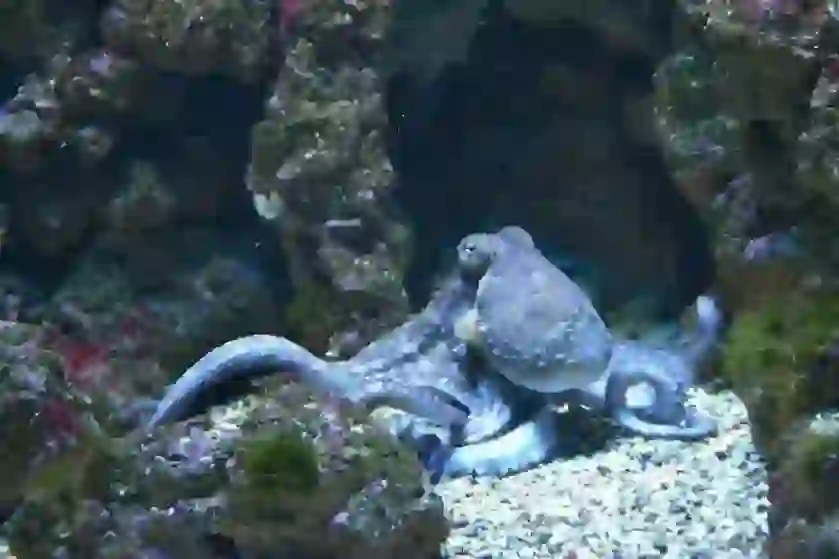
food
出典:https://pixabay.com/images/id-1633525/
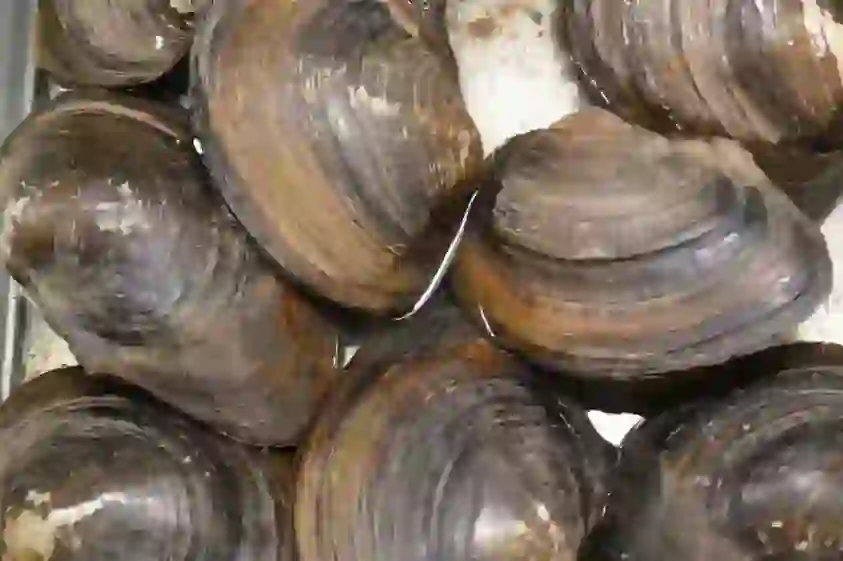
food
出典:https://pixabay.com/images/id-82986/

出典:https://pixabay.com/images/id-79804/

出典:https://pixabay.com/images/id-387243/

出典:https://www.pexels.com/ja-jp/photo/3164498/

出典:https://pixabay.com/images/id-4431241/

出典:https://pixabay.com/images/id-4503005/
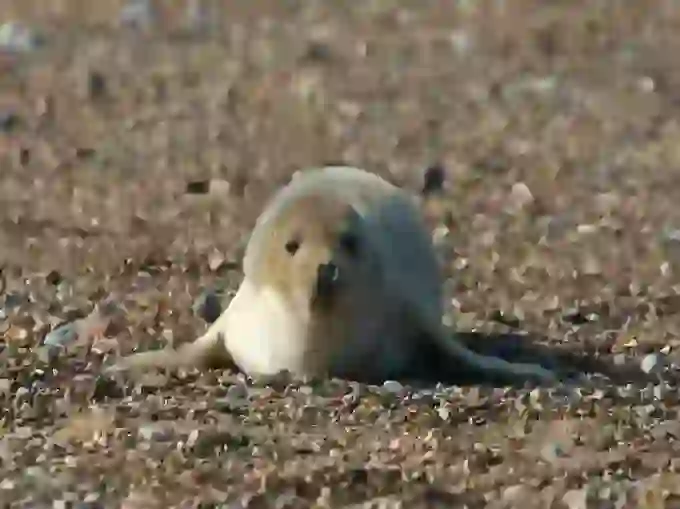
similar
出典:https://pixabay.com/images/id-5578009/

出典:https://unsplash.com/photos/Xf-a0JR6ZqA
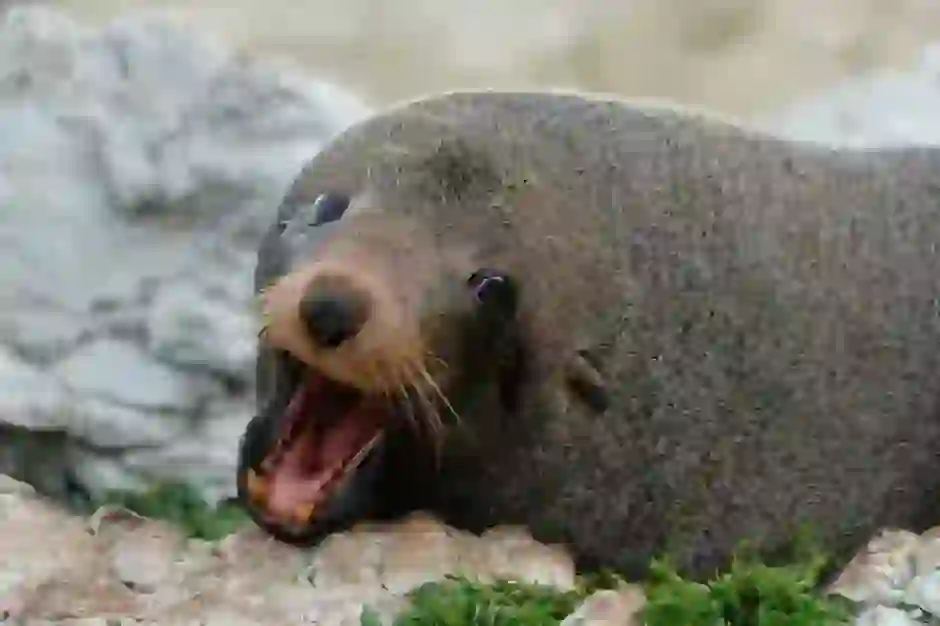
similar
出典:https://unsplash.com/photos/1YmRIhxjvns

出典:https://pixabay.com/images/id-3433743/

出典:https://pixabay.com/images/id-4431242/

出典:https://pixabay.com/images/id-5758778/

出典:https://pixabay.com/images/id-3433729/
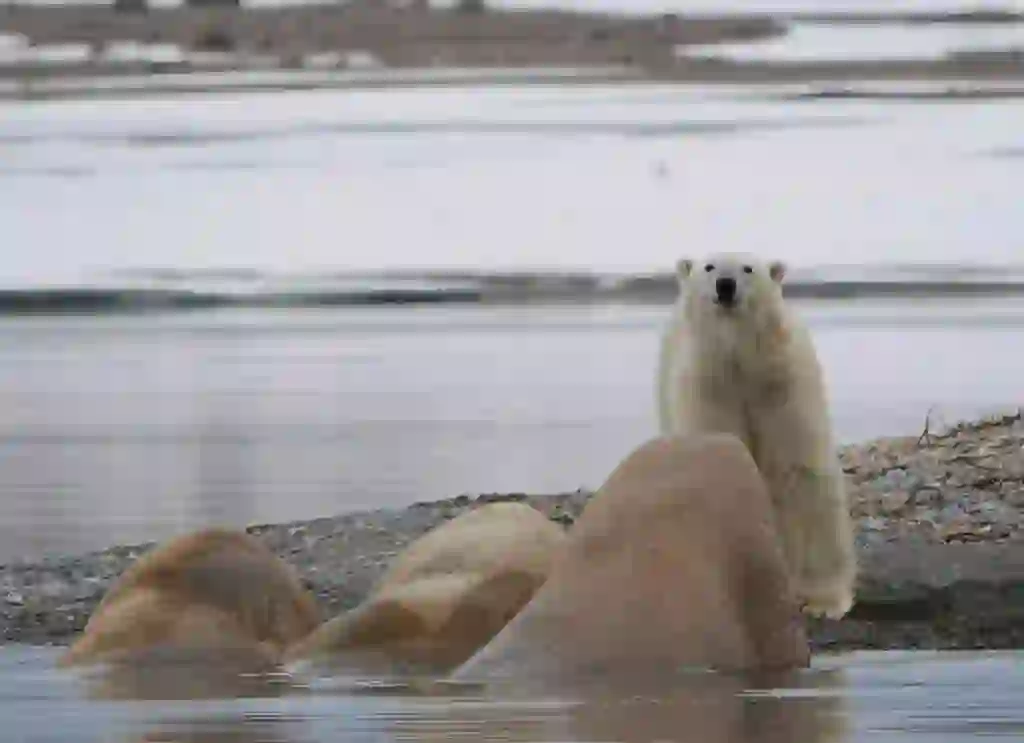
enemy
出典:https://unsplash.com/photos/dpxJvWI_7CE

Help Enrich Our Animalbook.jp with Your Media!
We are constantly looking to expand and enrich our Animalbook.jp with amazing photos and videos of animals. If you have any media that you'd like to share, please contribute and help us showcase the beauty and diversity of the animal kingdom. Your submissions will be credited and featured in our encyclopedia, reaching a wide audience of animal lovers.


















